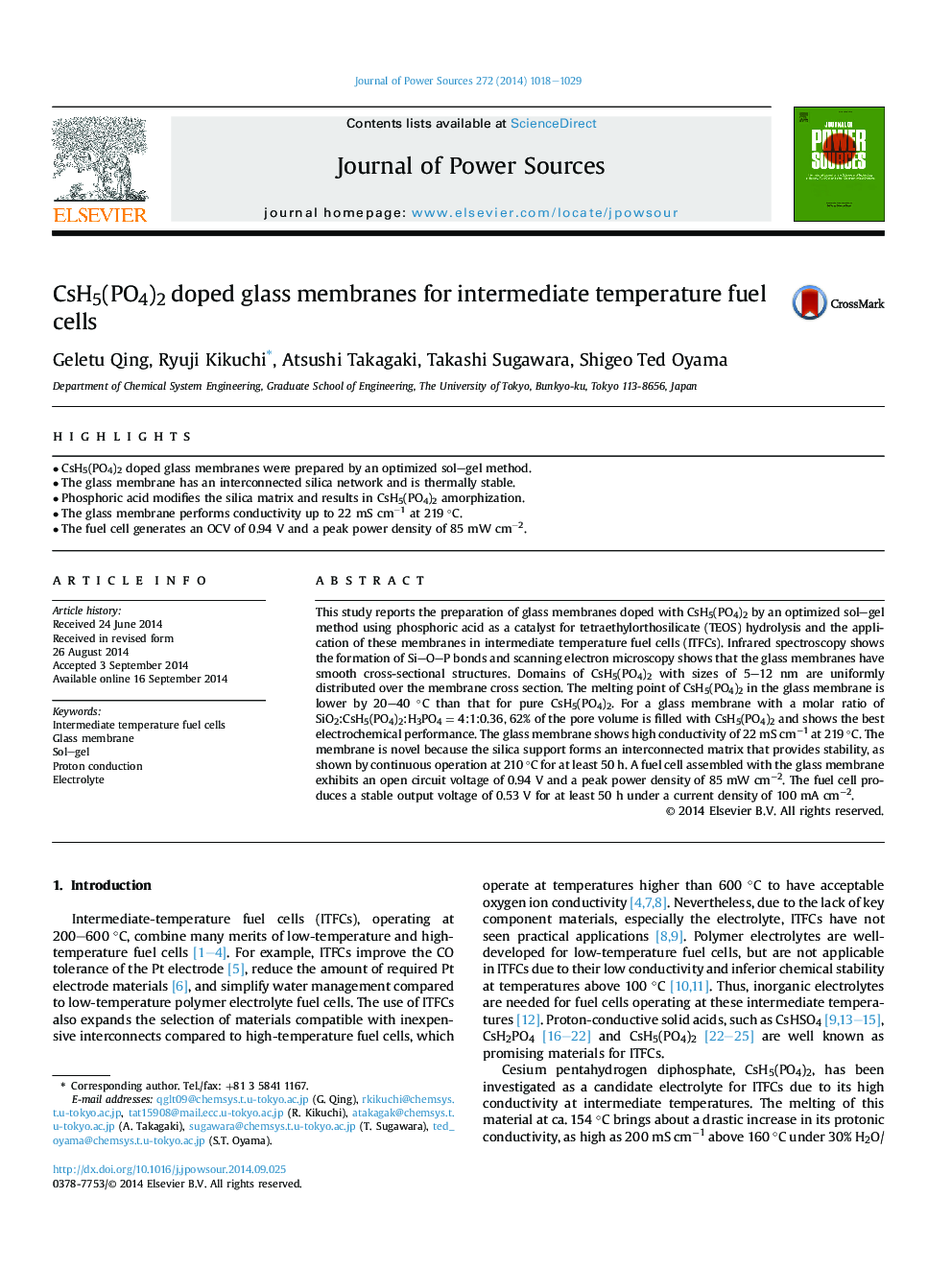| Article ID | Journal | Published Year | Pages | File Type |
|---|---|---|---|---|
| 1283961 | Journal of Power Sources | 2014 | 12 Pages |
•CsH5(PO4)2 doped glass membranes were prepared by an optimized sol–gel method.•The glass membrane has an interconnected silica network and is thermally stable.•Phosphoric acid modifies the silica matrix and results in CsH5(PO4)2 amorphization.•The glass membrane performs conductivity up to 22 mS cm−1 at 219 °C.•The fuel cell generates an OCV of 0.94 V and a peak power density of 85 mW cm−2.
This study reports the preparation of glass membranes doped with CsH5(PO4)2 by an optimized sol–gel method using phosphoric acid as a catalyst for tetraethylorthosilicate (TEOS) hydrolysis and the application of these membranes in intermediate temperature fuel cells (ITFCs). Infrared spectroscopy shows the formation of Si–O–P bonds and scanning electron microscopy shows that the glass membranes have smooth cross-sectional structures. Domains of CsH5(PO4)2 with sizes of 5–12 nm are uniformly distributed over the membrane cross section. The melting point of CsH5(PO4)2 in the glass membrane is lower by 20–40 °C than that for pure CsH5(PO4)2. For a glass membrane with a molar ratio of SiO2:CsH5(PO4)2:H3PO4 = 4:1:0.36, 62% of the pore volume is filled with CsH5(PO4)2 and shows the best electrochemical performance. The glass membrane shows high conductivity of 22 mS cm−1 at 219 °C. The membrane is novel because the silica support forms an interconnected matrix that provides stability, as shown by continuous operation at 210 °C for at least 50 h. A fuel cell assembled with the glass membrane exhibits an open circuit voltage of 0.94 V and a peak power density of 85 mW cm−2. The fuel cell produces a stable output voltage of 0.53 V for at least 50 h under a current density of 100 mA cm−2.
